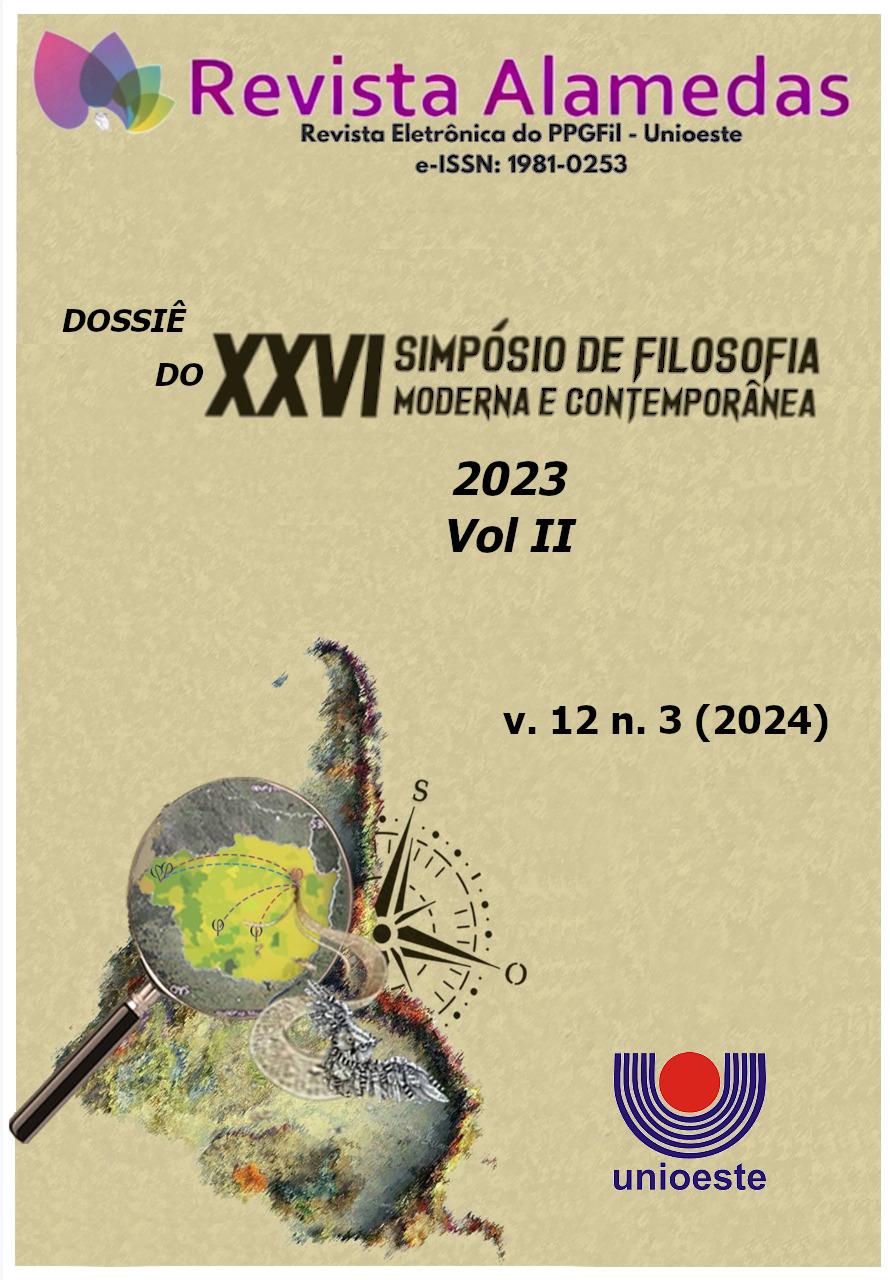O gabinete de curiosidades
entre ciência e experiência estética
DOI:
https://doi.org/10.48075/ra.v12i3.33101Keywords:
Gabinete de Curiosidades, Estética, Conhecimento, CiênciaAbstract
This article presents the concept of “Cabinet of Curiosities”, because if all knowledge begins with “astonishment”, as Aristotle and Plato pointed out in different ways, we can bring this concept to the understanding of an aesthetic epistemology. The Cabinet is, par excellence, the place of burlesque and is defined by causing astonishment through contrasts between artifacts, invented rarities and exotic forms. Linked to aesthetics and feelings of beauty and horror, as well as science and “discoveries”, they wrote the history of museums. Its objects provoke aesthetic pleasure and perform functions that are subject to knowledge, that is, that pass through the judgment of taste. Different authors have thought about the possibilities of “aesthetic cognition”, such as Alexandre Koyré (2011), Nelson Goodman (2006) and Arthur Schopenhauer (2003). Although this research finds its own path, the notorious previous theories will not be disregarded. During the research, we found this concept located at the junction of science and aesthetic experience: the Cabinet of Curiosities. The Cabinet, ancestor of science and natural history museums, has a multidisciplinary microcosm structure. These spaces serve as a key between scientific knowledge and aesthetic experience. They are aimed at objects, considered as archaeological artifacts that are between utilitarianism and the target of admiration, wearable artifacts or tools displayed in museums. The Cabinets of Curiosities or Wunderkammern (the German term widely used for the cabinet of arts and prodigies) emerged between the 16th and 17th centuries arising from the interest in "extraordinary things”. These chambers of wonders systematically brought together everything we should know. There was a tendency to collect everything that seemed extraordinary and unheard of, including bizarre objects or objects that were difficult to believe existed. The study presented here begins with an investigation into the mode of knowledge associated with dressing practices. The Cabinet was considered as a reading key. The Cabinet's analysis, together with the aesthetic experience it awakens, offers possibilities to discuss historical artifacts such as those related to clothing museums, as well as “the strange” in contemporary fashion.
Downloads
Published
How to Cite
Issue
Section
License
Copyright (c) 2024 Alamedas

This work is licensed under a Creative Commons Attribution-NonCommercial-ShareAlike 4.0 International License.
Aviso de Direito Autoral Creative Commons
Política para Periódicos de Acesso Livre
Autores que publicam nesta revista concordam com os seguintes termos:
1. Autores mantém os direitos autorais e concedem à revista o direito de primeira publicação, com o trabalho simultaneamente licenciado sob a Licença Creative Commons Attribution que permite o compartilhamento do trabalho com reconhecimento da autoria e publicação inicial nesta revista.2. Autores têm autorização para assumir contratos adicionais separadamente, para distribuição não-exclusiva da versão do trabalho publicada nesta revista (ex.: publicar em repositório institucional ou como capítulo de livro), com reconhecimento de autoria e publicação inicial nesta revista.
3. Autores têm permissão e são estimulados a publicar e distribuir seu trabalho online (ex.: em repositórios institucionais ou na sua página pessoal) a qualquer ponto antes ou durante o processo editorial, já que isso pode gerar alterações produtivas, bem como aumentar o impacto e a citação do trabalho publicado (Veja O Efeito do Acesso Livre).
Licença Creative Commons
Esta obra está licenciada com uma Licença Creative Commons Atribuição-NãoComercial-CompartilhaIgual 4.0 Internacional, o que permite compartilhar, copiar, distribuir, exibir, reproduzir, a totalidade ou partes desde que não tenha objetivo comercial e sejam citados os autores e a fonte.


